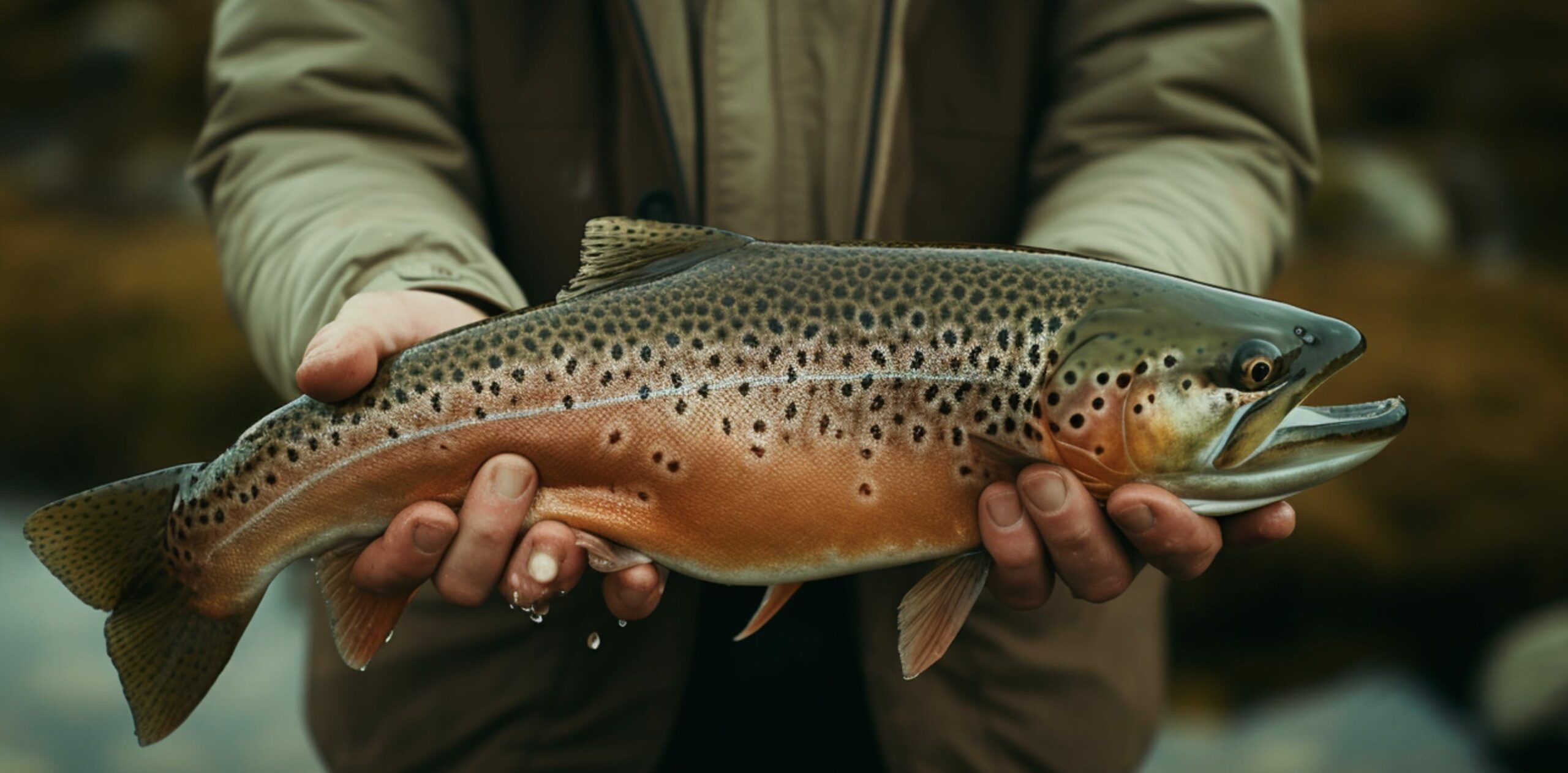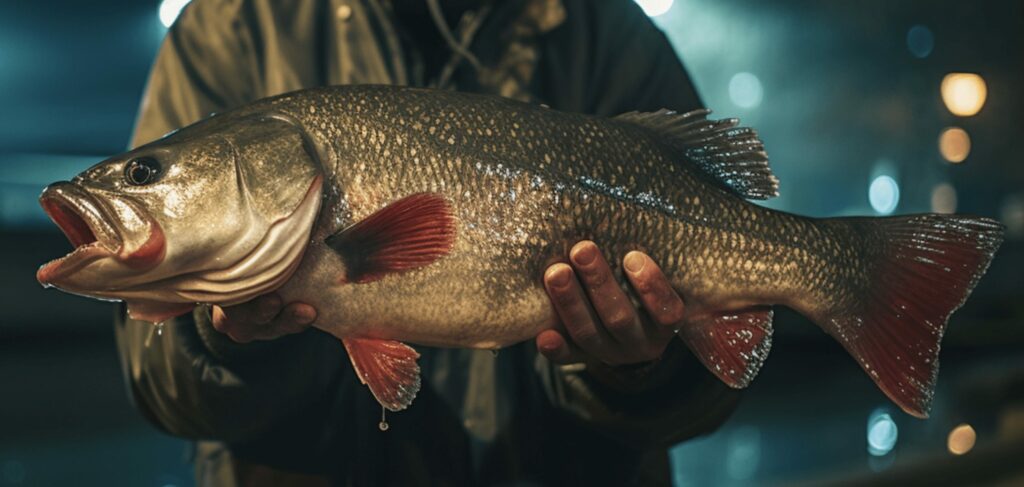Fishing for rainbow trout at night can be a thrilling adventure, but with so many tips and tricks out there, how do you know which ones work best when the sun goes down?
In this guide, I’ll explore everything you need to know about night fishing for rainbow trout. I’ll show you why it’s special, what makes it work, and how different methods stack up against each other.
Let’s dive right in!
Understanding Rainbow Trout

Rainbow trout are fascinating creatures, especially when it comes to their behavior at night.
Contrary to what you might think, these fish are not dormant when the sun goes down. In fact, they can be quite active, and this can lead to some exciting fishing opportunities.
Rainbow trout, like their brown and brook trout counterparts, do bite at night. You might even find that they bite more frequently at night than during the day.
Why Are Rainbow Trout Active At Night?
One of the reasons why rainbow trout are more active at night is due to their natural wariness.
During the day, they are quick to dash into cover at the slightest disturbance. But at night, they become more relaxed and are more willing to venture out into the open.
This is because they can’t see as well, so they’re more likely to take a bait, fly, or lure without hesitation.
Vibration is Key
However, it’s important to note that while rainbow trout are active at night, their vision isn’t as sharp as during the day. They rely more on their other senses, such as their lateral line system, which detects vibrations in the water.
This means that when fishing for rainbow trout at night, you’ll want to use lures or baits that create a lot of movement or vibration in the water to attract their attention.
Tips For Rainbow Trout Fishing At Night
Here are some tips to follow if you want to successfully fish for rainbow trout at night:
Choose the Right Location

Deep pools are often a prime location for night fishing as these areas provide a safe haven for trout, offering them protection from predators and giving them access to a steady food supply.
In addition to deep pools, slower-moving water is another good place to look for rainbow trout at night as these areas are often rich in food sources, attracting a variety of aquatic insects and smaller fish that the trout feed on.
Overhead cover, such as trees or bridges, can also be beneficial when fishing for rainbow trout at night. These structures provide shelter for the trout, protecting them from predators. They can also attract insects and other prey, providing a plentiful food source for the trout.
Use the Right Lures
Since trout rely more on their sense of vibration and sound in the water during the darkness, it’s essential to use lures that can stimulate these senses.
Topwater lures are a great choice for night fishing.
These lures float on the surface of the water and create a disturbance when they’re retrieved, attracting the attention of nearby trout. Some topwater lures also have built-in rattles or other noise-making features, which can further enhance their appeal to trout.
Spinners are another good option for night fishing as these lures have a spinning blade that creates a lot of vibration in the water when they’re retrieved
Best Time to Fish
The best time to fish for trout at night is during the full moon, or the 4 nights before and 4 nights after the moon is full.
Trout seem to be more aggressive during this time and the extra moonlight creates better night vision.
Moonless night fishing can also be good but it’s much harder for anglers to see. So that’s that.
Rigging Your Bait
The way you present your bait can affect how attractive it is to the trout and can influence your chances of getting a bite.
One effective method for night fishing is to use a glow float.
This is a type of float that glows in the dark, making it easier for you to see your line in low light conditions. Attach the glow float about 3 to 5 feet above your hook, depending on the depth of the water you’re fishing in.
Next, add your bait. Live bait, such as worms or minnows, can be very effective for night fishing. The movement and scent of live bait can attract trout and encourage them to bite.
Preparations Before Rainbow Trout Fishing At Night
Here are some preparations I always do before going rainbow trout fishing at night:
Gear Preparation

Before heading out for a night of rainbow trout fishing, it’s crucial to ensure you have the right gear. This includes a reliable fishing rod and reel, appropriate line weight, and a variety of lures or bait options.
Remember, trout hunting at night are generally on the lookout for larger meals, so larger flies and lures make sense.
Also, consider using lighted bobbers to help you detect bites in the dark.
Line and Hook Rigging
Rig your line with a large size 2 to 1/0 bait hook, and then add a couple of small split shots about 8 to 12 inches above the hook as this setup will help keep your bait at the right depth and make it more attractive to the trout.
Don’t forget to attach a glow float that’s easy to see about 3 to 5 feet above the hook, depending on the depth of the water you’re fishing.
Safety Preparations
Safety should always be your priority when fishing at night. Make sure you have a good source of light, and be aware of your surroundings. Also, let someone know where you’re going and when you plan to return. It’s also a good idea to bring a first aid kit in case of any minor injuries.
Scouting the Location
Before you start fishing, take some time to scout the location. Look for areas with deep pools or slower-moving water where trout are likely to congregate. Additionally, consider areas with overhead cover such as trees or bridges, as these can provide shelter and attract prey for the trout.
In the next section, we’ll delve into some techniques for rainbow trout fishing at night, so you can make the most of these unique fishing conditions.
Techniques For Rainbow Trout Fishing At Night
Here are some techniques to follow if you want to maximize the fun out of fishing for rainbow trout at night:
Using Topwater Lures

Topwater lures can be highly effective when fishing for rainbow trout at night.
These lures float on the surface of the water and create a disturbance when they’re retrieved, mimicking the movement of a struggling insect or small fish.
A spook is an excellent trout lure at night, as you can create a lot of commotion on the water surface by twitching your rod tip, making the spook resemble a small animal struggling in the water.
Rigging Baitfish
Rigging baitfish correctly can significantly improve your chances of catching rainbow trout at night.
Stick the hook just behind the baitfish’s dorsal fin so that they drift and struggle through the water with their head down. This mimics the behavior of a wounded fish, which can attract the attention of predatory trout.
Using Streamer Flies
Streamer flies can be very successful at night.
Use Woolhead Sculpins, Woolly Buggers as well as muddlers in a standard sculpin pattern or marabou. The movement of these flies in the water can attract the attention of trout.
Avoiding Sudden Sounds and Movements
Rainbow trout can’t see well at night, so sudden sounds and movements can scare them away. Try to be as quiet and smooth as possible when casting and retrieving your line to avoid spooking the fish.
Other Gear For Rainbow Trout Fishing At Night
Here are other equipment I carry on with me when fishing for rainbow trout:
Fishing Line
When it comes to night fishing for rainbow trout, the type of fishing line you use can make a significant difference. Fluorocarbon line is a popular choice among many anglers. One of its main advantages is its near invisibility in the water. This can be particularly beneficial when fishing for rainbow trout, which are known for their keen eyesight. The less visible your line is, the less likely the trout are to be spooked by it. Additionally, fluorocarbon line is highly resistant to abrasion, which can be useful when fishing in areas with rocks or other structures that could potentially damage your line.
Fishing Net
A reliable fishing net is another essential piece of gear for night fishing. When you hook a rainbow trout, you’ll want to be able to land it quickly and efficiently. A net with a wide opening and deep bag is ideal for this purpose. The wide opening allows you to scoop the fish out of the water easily, while the deep bag ensures that the fish can’t escape once it’s in the net. A net with a long handle can also be beneficial, as it allows you to reach out over the water to net your fish.
Headlamp
A headlamp is a must-have item for any night fishing trip. It provides the light you need to see what you’re doing, while also leaving your hands free to handle your fishing gear. When choosing a headlamp, look for one with a bright, wide beam that can illuminate a large area. You’ll also want a headlamp with a long battery life, so you don’t have to worry about it dying in the middle of your fishing trip.
Warm Clothing

Even during the summer months, it can get quite chilly at night. To stay comfortable, it’s important to dress appropriately. Layering your clothing is a good strategy, as it allows you to add or remove layers as needed. A warm jacket is a must, and it’s also a good idea to bring a waterproof jacket in case of rain. Don’t forget a hat and gloves to keep your head and hands warm.
Frequently Asked Questions
What time are rainbow trout most active?
Rainbow trout are most active during the early morning from dawn until 2 hours after sunrise, and late afternoon from 3 hours prior to sunset until dusk. They feed throughout the entire day and into the night, but these specific times seem to offer the best trout fishing on most days and in most seasons. However, during the night, especially under the full moon, rainbow trout can also be quite active, making night fishing a unique and rewarding experience.
What are the best conditions to catch rainbow trout?
Rainbow trout prefer water temperatures between 55 and 60 degrees Fahrenheit, and they can be found in both still and moving waters. Overcast days can be particularly good for trout fishing, as the cloud cover reduces light penetration and can make trout less wary and more likely to strike at your bait or lure. Additionally, trout often feed more aggressively in the period immediately following a rainstorm.
What temperature are rainbow trout most active?
Rainbow trout are most active when water temperatures are between 55 and 60 degrees Fahrenheit. They can tolerate a wide range of temperatures, but their feeding activity tends to decrease when water temperatures get too far above or below this range.





